Brief

At a Glance
- Video games are now the first choice of entertainment for players ages 13 to 17, who spend more time playing games than on social media, TV, or any other media.
- Younger players spend more time playing metaverse games than older players do, and they expect to spend more time in the metaverse in the future.
- To meet the evolving preferences of these younger players, developers and publishers need to invest in scale, develop IP that can be franchised, and implement stronger talent models to find and retain people in an increasingly competitive environment.
There’s been a fair amount of buzz over the advent of the metaverse over the past year or two, and more than a few observers have taken a gimlet eye to the bold claims about life and commerce shifting so far into the digital realm. But one large group of consumers has been comfortable spending a lot of time in virtual worlds for years: gamers.
Younger gamers in particular, those from 13 to 17 years of age, have adopted metaverse-style games quicker and tend to be more interested in them than players a few years older (18 to 34). They’re also more likely to believe that they’ll spend more time in the future with metaverse games, by which we mean persistent and immersive virtual environments that overlap with the physical world, where players go not just for the game, but also to socialize, create things, and sometimes even attend events (see Figure 1). Even younger gamers who haven’t played in the metaverse say they’ll probably do so in the future. And half of younger gamers who don’t play online games at all say they’re interested in metaverse technology.
Younger gamers expect to spend more time in the metaverse

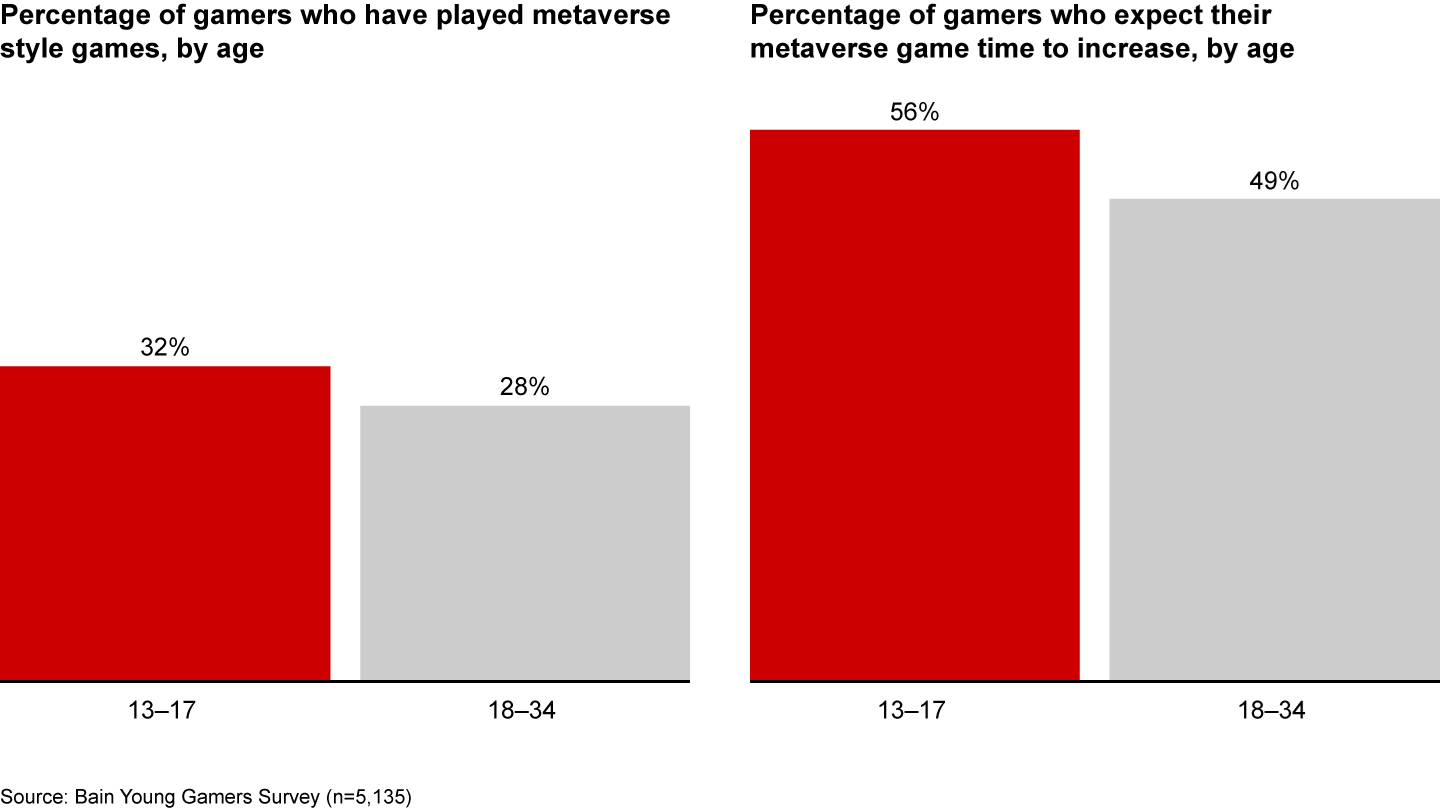
This preference is consistent: About half of younger gamers said they would rather attend school events in the metaverse, and half said they would rather play with their friends online than in person (see Figure 2).
Half of younger gamers prefer to spend time with their friends in games

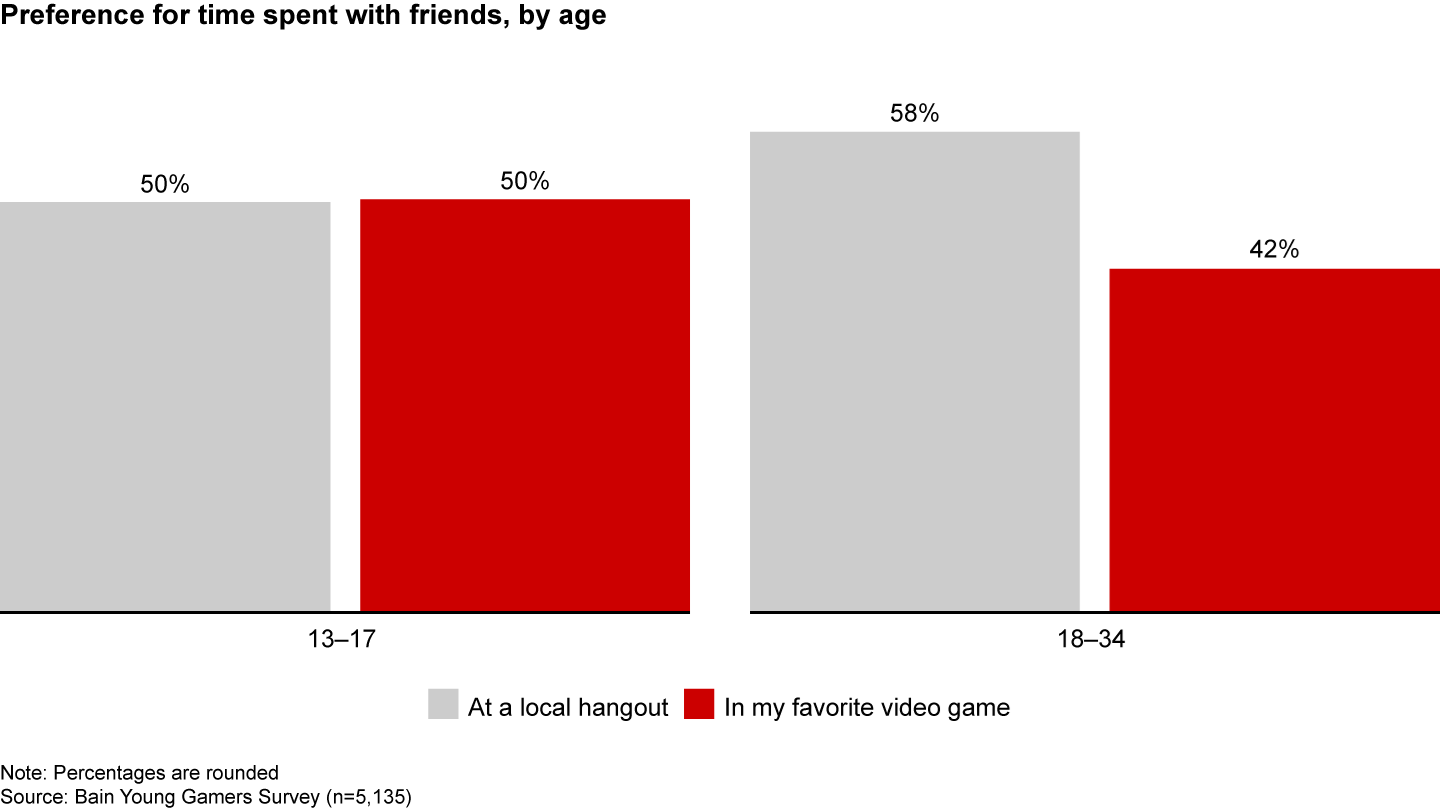
53% of younger metaverse gamers said they would prefer to inherit a vacation home in the metaverse than on an exotic island.
This is just one example of how gamers’ preferences are changing as the delineation between digital and real-world experiences recedes, and video games become the foundation for a far broader collection of entertainment experiences.
These shifting preferences have major implications for the companies that develop and distribute these gaming experiences. We found trends toward metaverse gaming are true in all five of the markets we surveyed (Japan, South Korea, China, the US, and Brazil), with limited differences among geographies.
Our survey also indicates that gamers place greater importance on metaverse experiences that (see Figure 3):
- are immersive;
- are social;
- allow players to be active creators;
- are persistent and available on any device, and
- offer in-game purchases.
Immersive and socializing features are especially attractive to younger gamers

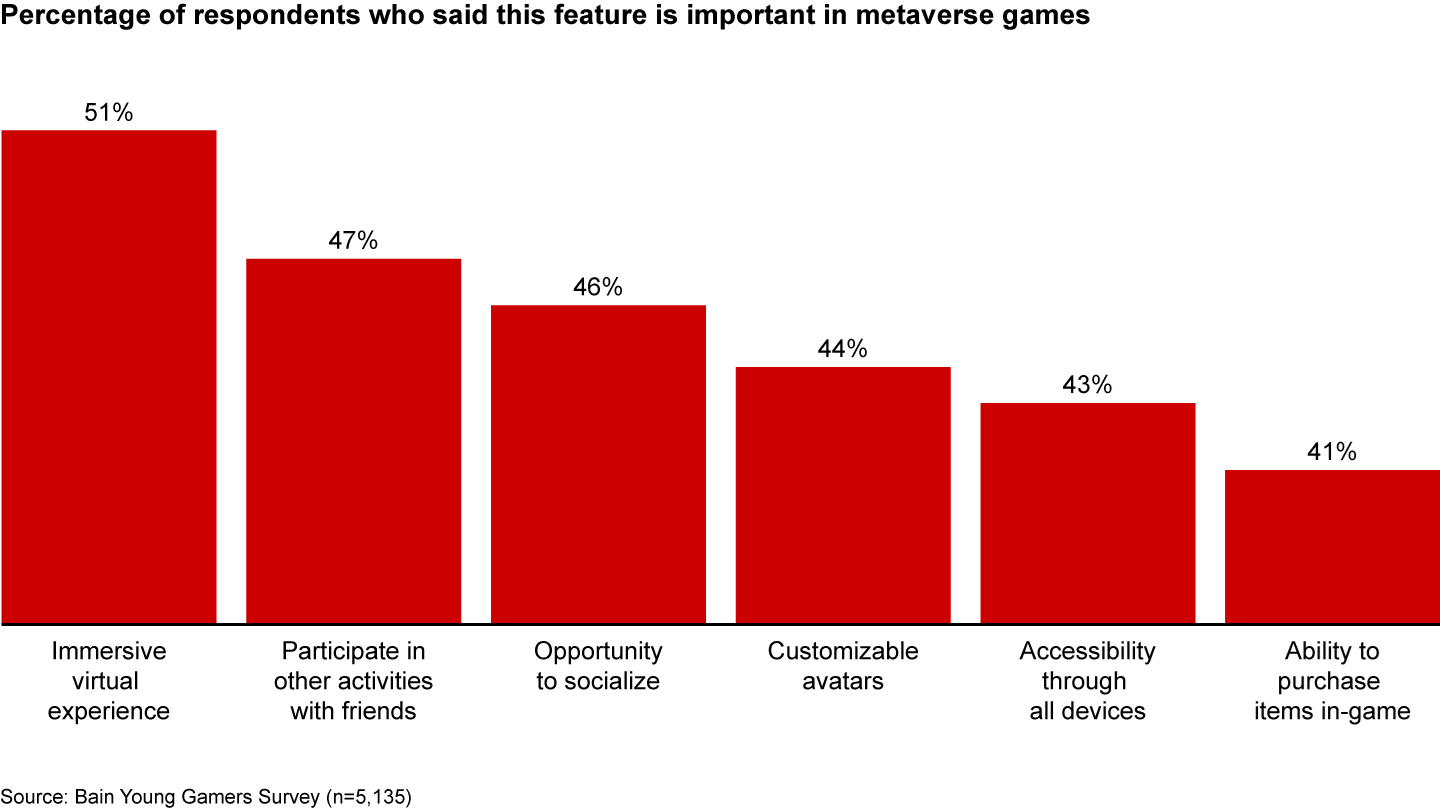
While most of these features are similarly important for younger gamers (13 to 17) and adults, we see a few differences. For instance, younger gamers place greater importance on the ability to make in-game purchases (44%) than adult gamers do (34%).
44% of younger metaverse gamers say in-game purchases are a reason they play metaverse games.
Social experiences in game spaces lay the foundation for other online activities, such as concerts, sporting events, and other aspects of life, including work and commerce. The growing demand for community experiences is becoming a catalyst for a broader metaverse.
Time online and limits to customization
According to our research, this younger group of gamers spends more time and money on video games than the age group above them (see Figure 4).
Younger gamers spend more time and money on games than their older peers

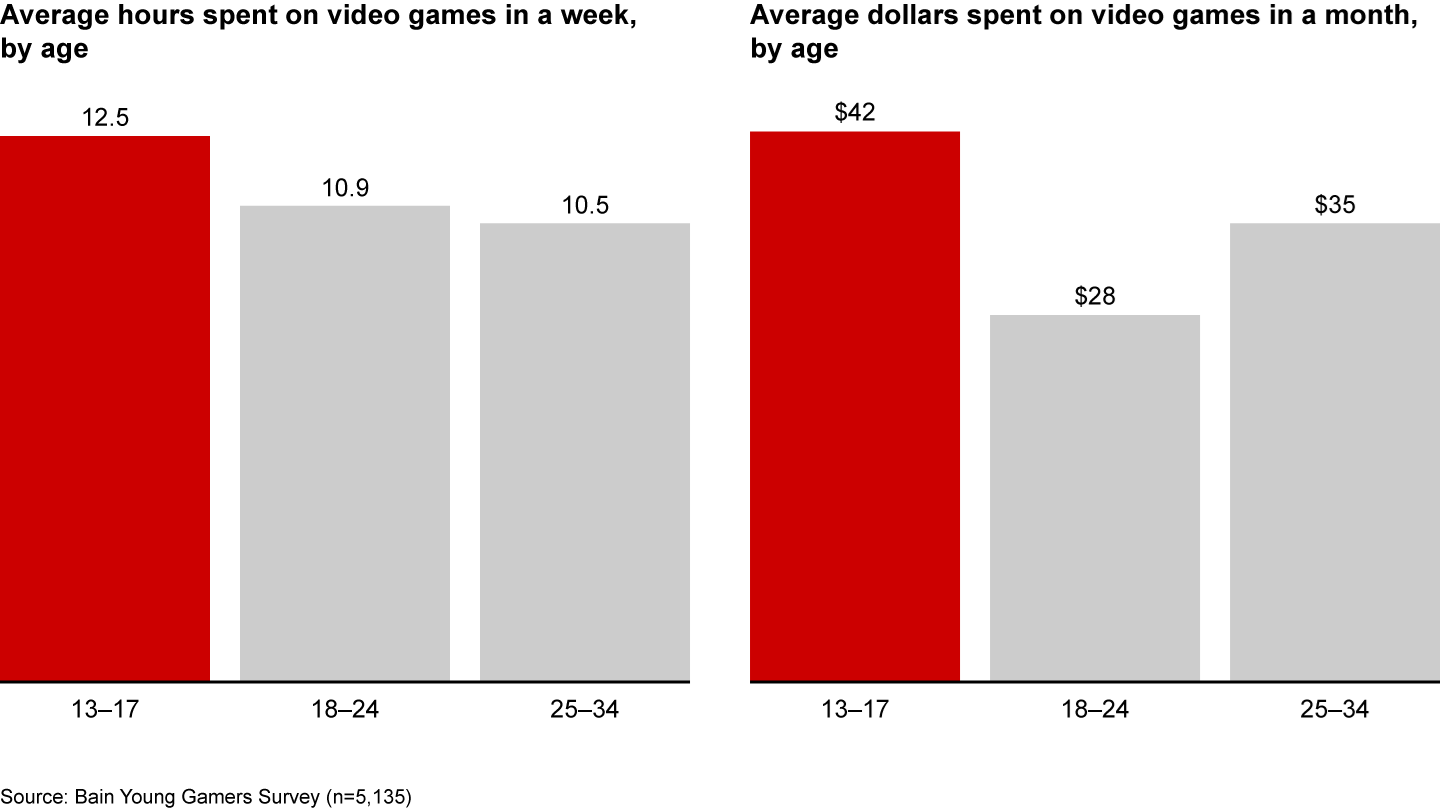
Younger gamers also spend more time on video games than any other form of media (see Figure 5).
Younger gamers spend more time on video games than on other media

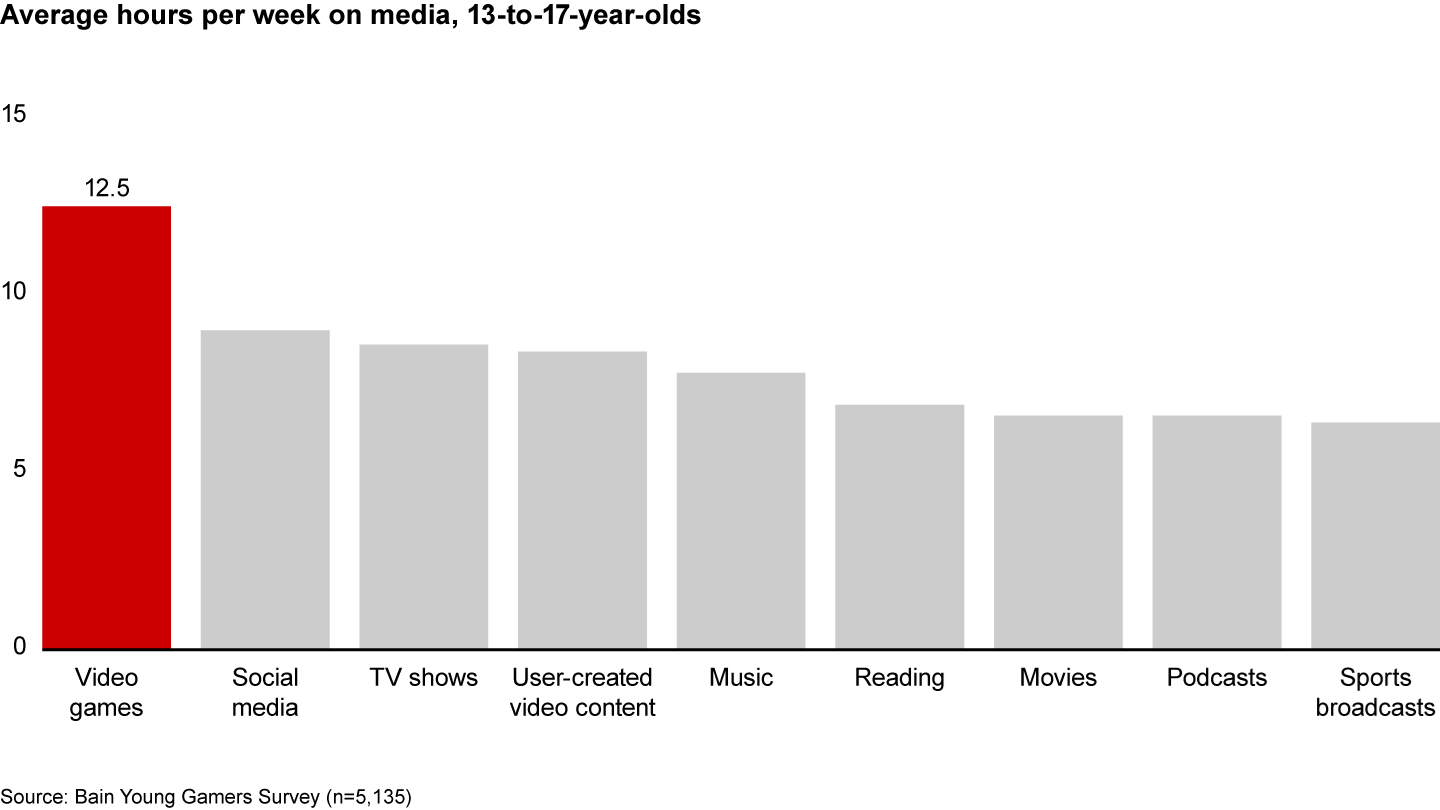
This evolving preference bodes well for growth of the gaming industry. The rise of new payment models like monthly subscriptions to game libraries (such as Xbox Game Pass and Apple Arcade) along with the global dominance of free-to-play games have improved average revenue per user (ARPUs). This trend is likely to accelerate as video games become the foundation for other paid entertainment experiences.
Within free-to-play models, there has been some backlash against features that let gamers pay for better performance, such as buying special capabilities or a more powerful weapon. Our survey found that 56% of younger gamers said they were comfortable paying to unlock features that improve their performance, while more older players were not. Developers and publishers that get this right through experimentation and listening to gamer feedback should benefit from higher engagement among Gen Z, which includes the 13-to-17 age group. Younger gamers are also more likely to play online games to compete with friends, family, and strangers, compared with adult gamers who tend to play for fun and are more likely to play solo (see Figure 6).
Social gaming wins; younger gamers prefer to play with others

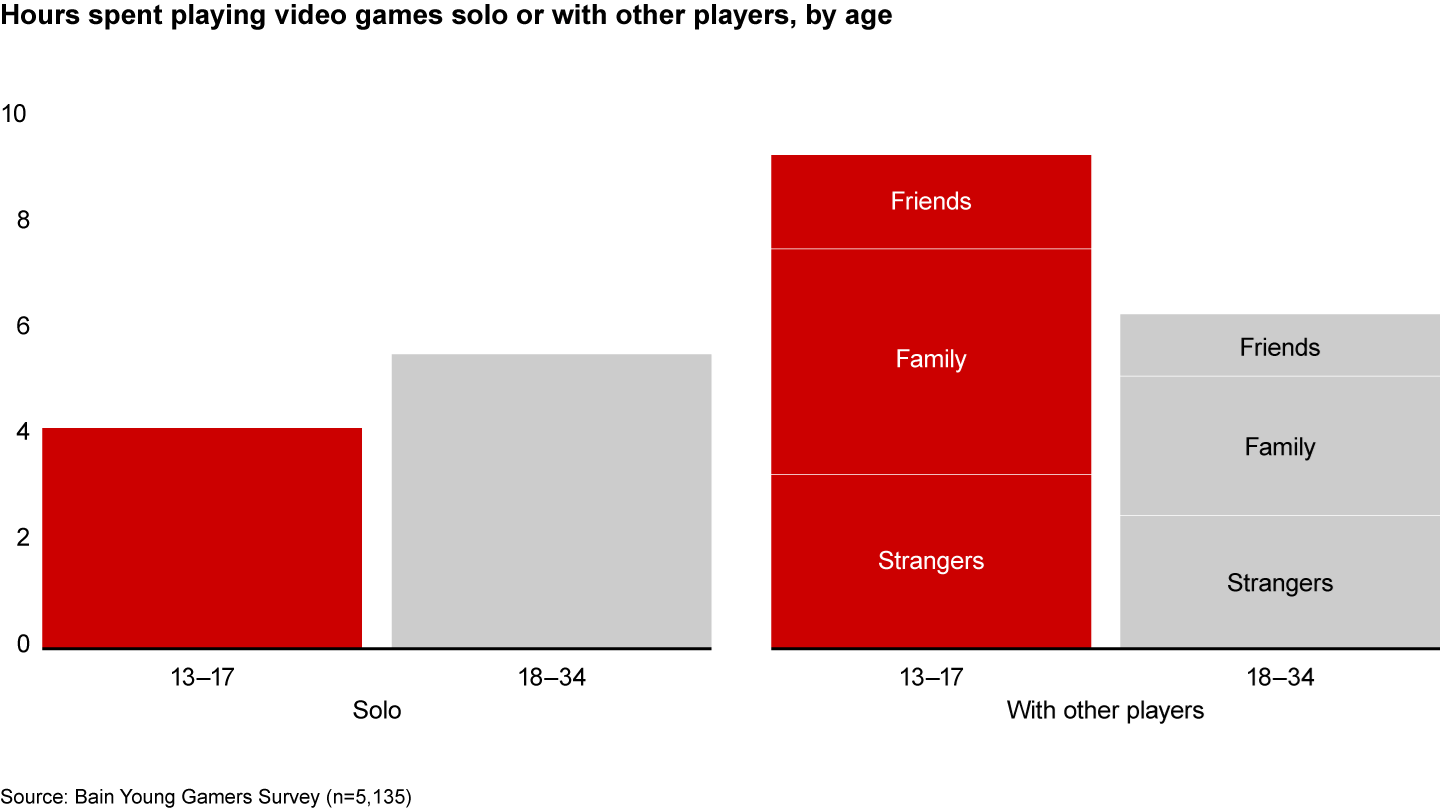
Not all models are a guaranteed home run. While players show a strong desire for control over basic user-generated content (UGC), such as customizing their appearance and making simple mods, there are limits to that interest. The demand for more extensive creative capabilities, such as creating mini games within larger platforms, is significantly lower. More than 55% of gamers who plan to increase time spent on UGC-enabled platforms don’t see customization as essential to their overall gaming experience. Even among active players of virtual reality and augmented reality games, more than 50% don’t see the technology as essential.
Advances in technology will continue to play a major role in delivering more realistic and compelling game playing experiences. Our research shows greater demand for interoperability among young players—for example, the ability to take an avatar or skin from one game into another. However, delivering a fun, immersive experience 5 to 10 years from now will probably not depend on replicating the immersive experience of Ready Player One!
Rules of play
Bain’s research also indicates that although there are some differences between younger gamer motivations and preferences across geographies, similarities are growing. As the structural barriers that resulted in regional content recede, this demand clears the path for more global successes.
These findings have significant implications for the priorities of developers and publishers.
- Building fun, immersive experiences will remain paramount. This core imperative won’t change, but these experiences will need to embrace the preferences of younger gamers: immersive, social, multiplatform, and customizable with UGC capabilities. Critically, the core intellectual property (IP) needs to have applicability within the game and beyond it. Riot Games’ League of Legends (LoL) offers a good example. The character-driven IP not only lends itself to extensions of the game in other forms, but also generates enough fan interest to support activities beyond gaming, including a limited series for Netflix, Arcane, and a virtual K-pop girl band starring four LoL characters. The franchise also extends to Esports, with a peak of 74 million concurrent viewers watching the LoL World Championship final in 2021, up from 46 million the year before. Casual, mobile games, or licensed sports games will remain a major part of the market. But these aren’t likely to drive the industry economics and long-term player engagement over the next decade.
- Scale to succeed. Building and operating multiexperiential metaverse games will require immense investment (the average cost to build a AAA-class game is already north of $80 million). But scale means much more than that. Video game companies will need to build and nurture the communities required for games to flourish. Scale also provides such strategic advantages as larger data assets to generate insights that support superior monetization; greater ability to attract and retain star talent through compensation and breadth of roles; and a more attractive proposition for distribution and marketing partners. The frenzied M&A activity that defined the first half of 2022 may be only the beginning. Experience from other media industries suggests that more consolidation is likely.
- Manage franchises expansively. Gamers’ hunger for more interactive media experiences creates new opportunities in franchise management. There’s much to learn from Disney, which has mastered this capability for nearly a century. Newer examples closer to the gaming world also offer lessons. Pokemon’s expansion across media, video games, consumer goods, and broader experiences stands out; more than 80% of its lifetime revenue has been generated by nongame products. We believe video game developers and publishers are well-positioned to expand franchises, given the continuous nature of touch points with players (see Figure 7).
Successful franchises follow a common path to diversify and broaden their fan base beyond players
- Finding and keeping talent. Game developers compete with other tech companies for top coding talent, but our research of salaries shows game companies pay less than competitors, such as technology companies. To deliver the top-tier metaverse content that younger gamers crave, gaming companies will need to adapt their talent strategies so they can attract and retain the right people. Offering above-market compensation and benefits is part of the answer. But so too is providing a future-friendly work environment—more virtual, less hierarchical, leaner, and more agile.
The development of metaverse gaming environments is changing the baseline expectations for young gamers and creating new worlds of opportunities for online experiences, including entertainment events, commerce, and community building. Gaming companies are experimenting with ways to generate new value from these developments. To remain competitive, gaming companies will need to gain a deep understanding of these younger players while building the capabilities within their organizations to delight and engage them. Developing core IP that lends itself to franchise extensions will be critical—and increasingly, gaming companies will need to make sure that the IP suits the preferences of the younger gamers who are already spending their time and money in the metaverse.

Six Shifts Changing the Future of Media
Investment capital is flowing into start-ups and new technologies to meet the evolving demands of media and entertainment consumers.